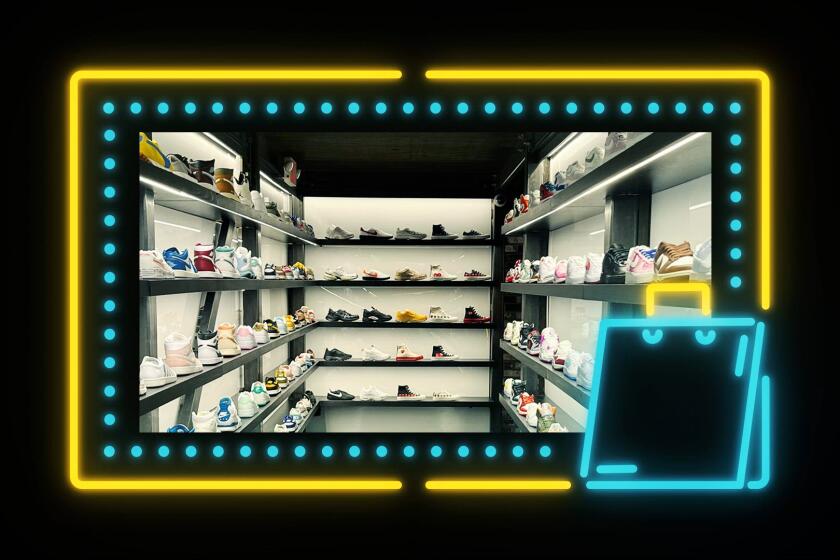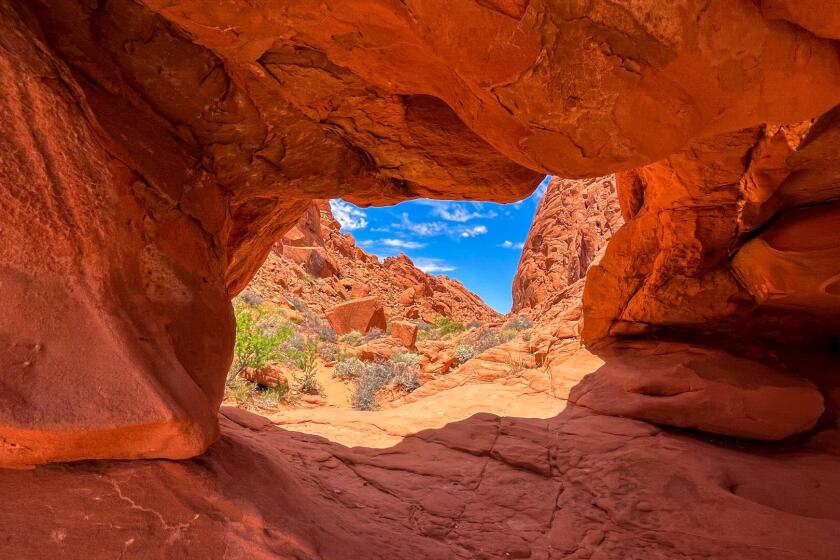Introducing Tomorrow’s Historic Walking Tour
To observers, the landscape surrounding the Southern California Institute of Architecture downtown is an urban wasteland as devoid of life as the dirt lot on which SCI-Arc sits near 4th and Merrick streets. But like a production of “Blade Runner” in reverse, a team of artists is using the technology of the future in a show that resurrects the phantom streets of a vanished Los Angeles.
In “34 North 118 West” (the title refers to L.A.’s latitudinal and longitudinal coordinates), Jeremy Hight, Jeff Knowlton and Naomi Spellman offer visitors a historic walking tour using the satellite technology now installed in some cars to provide map coordinates, directions and estimated arrival times.
Arriving at SCI-Arc, sonic archeologists are given tablet PCs and headphones linked to a Global Positioning System and set loose in a four-block area around the institute. Each touch-screen PC is loaded with a detailed map of the area created by the Sanborn Insurance Co. in 1906. The maps, showing long-gone landmarks such as the Anheuser-Busch bottling plant and the C. Ganahl Lumber Co., are linked to a GPS satellite and dotted with pink onscreen “hot spots.” As visitors move about the neighborhood, arrival at a “hot spot” triggers an audio voice-over of dramatized history and anecdotes culled by the artists from old newspapers, personal reminiscences and letters from the past 100 years.
Near the SCI-Arc building, in a former freight station, a steam-powered locomotive is heard over the headphones. On 3rd Street, a rail worker describes his job stopping would-be suicides from committing “death by train.” Another “hot spot” launches a local legend about a bagpiper who used to play near the old La Grande passenger train station at 2nd Street and Santa Fe Avenue. (The piper got drunk, passed out on the tracks and awoke when a train ran over his hand.)
The artists, CalArts graduates specializing in multimedia projects, were inspired by the thought of more visionary uses for GPS and hand-held positioning systems. “These are the vulgar histories that don’t get recorded in the textbooks,” Knowlton says. “As this space gets reconfigured with new buildings, we’re able to pick up the past’s echoes and bring it to life in the present.”
*
Time travelers can excavate downtown history from 1 to 4 p.m. weekends through Dec. 22 at the Southern California Institute of Architecture, 350 Merrick St., Los Angeles. www.34n118w.net.
Sign up for The Wild
We’ll help you find the best places to hike, bike and run, as well as the perfect silent spots for meditation and yoga.
You may occasionally receive promotional content from the Los Angeles Times.



